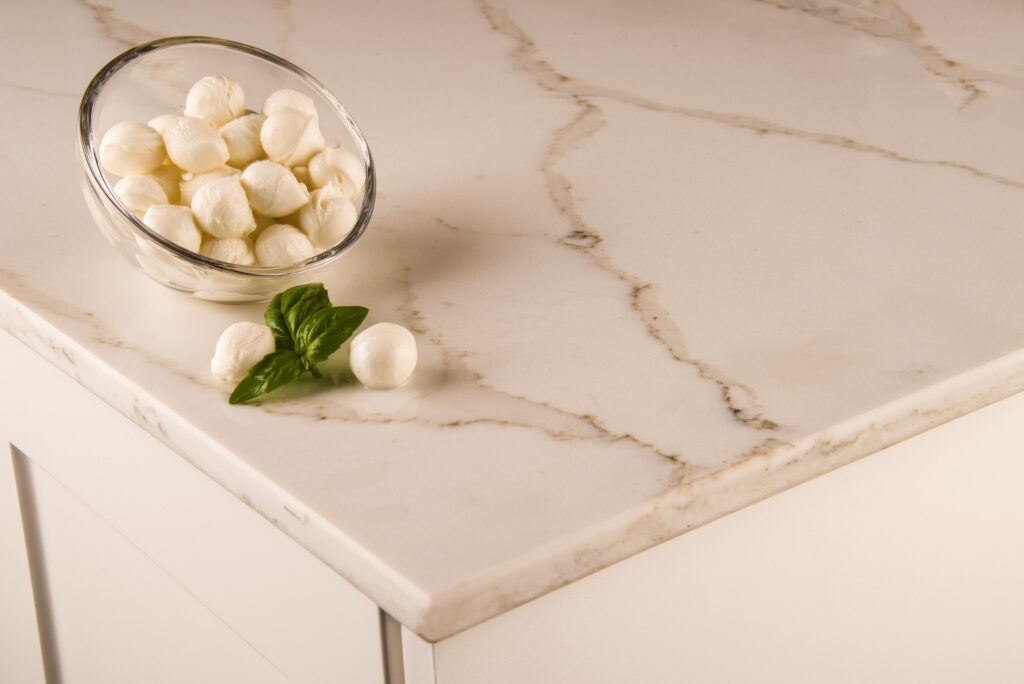Granite vs. Marble Countertops

Choosing a countertop that is right for you and your new kitchen is a crucial step in your kitchen remodel. Natural stone is a great choice as it adds beauty to the room, comes in a variety of colors, can be customized to your specific shape and size, and can blend in with any style of home décor. When it comes to natural stone, granite and marble are the most popular choices. Marble is typically more elegant in appearance and granite provides a more natural look. Ultimately, it is up to the homeowner to decide which one fits their kitchen best. Here’s a closer look at the differences between the two most popular options of natural stone countertops.
Appearance:
Marble is a smooth surface typically striated with veins of minerals. Some marble countertops are quartz based and others are composed of other minerals like serpentine. You will typically see marble in variations of black and white.
Granite is made up of silica, mica, feldspar and quartz and generally has a packed, granular surface. Color can vary from light to dark and can be seen in flecks, veins or even solid patterns depending on the overall makeup of the slab.
In both marble and granite, appearance can differ from slab to slab depending on the natural source and cut location.
Installation:
The installation process for both marble and granite countertops is the same. A template for the specific dimensions needed is transferred to a slab and then cut to fit and finished. The cut slab is then set in place directly on the cabinets and secured with silicone adhesive. Holes for sinks, faucets and other fixtures are also cut into place so each piece is entirely customized to your kitchen. These slabs can be very cumbersome to handle so all measuring, cutting and installation should be done by a professional.

Maintenance:
All natural stone requires maintenance and homeowners should be consistent in keeping up with the condition of their kitchen countertops. Granite is generally very durable, stain-resistant, and requires a little less maintenance than marble. It is suggested that granite be sealed after installation and then resealed every year following to ensure proper upkeep. Minor scratches or small chips can be repaired with a stone epoxy.
Marble should also be sealed with a sealant designed specifically for porous stone surfaces. Because of it’s composition, marble is prone to stain, even if sealed, so be sure to clean up spills as they happen. Avoid leaving acidic liquids such as lemon juice, tomato sauce or other citruses for too long as they can etch into the stone and cause damage.
Cost:
While neither marble or granite are a cheap countertop option, the beauty and durability of the stones make them well worth the cost. Granite is typically the less expensive of the two starting at roughly $75/square foot. Marble countertops can start at around $100/square foot. Prices always fluctuate of course so check with your local supplier for up-to-date pricing.


